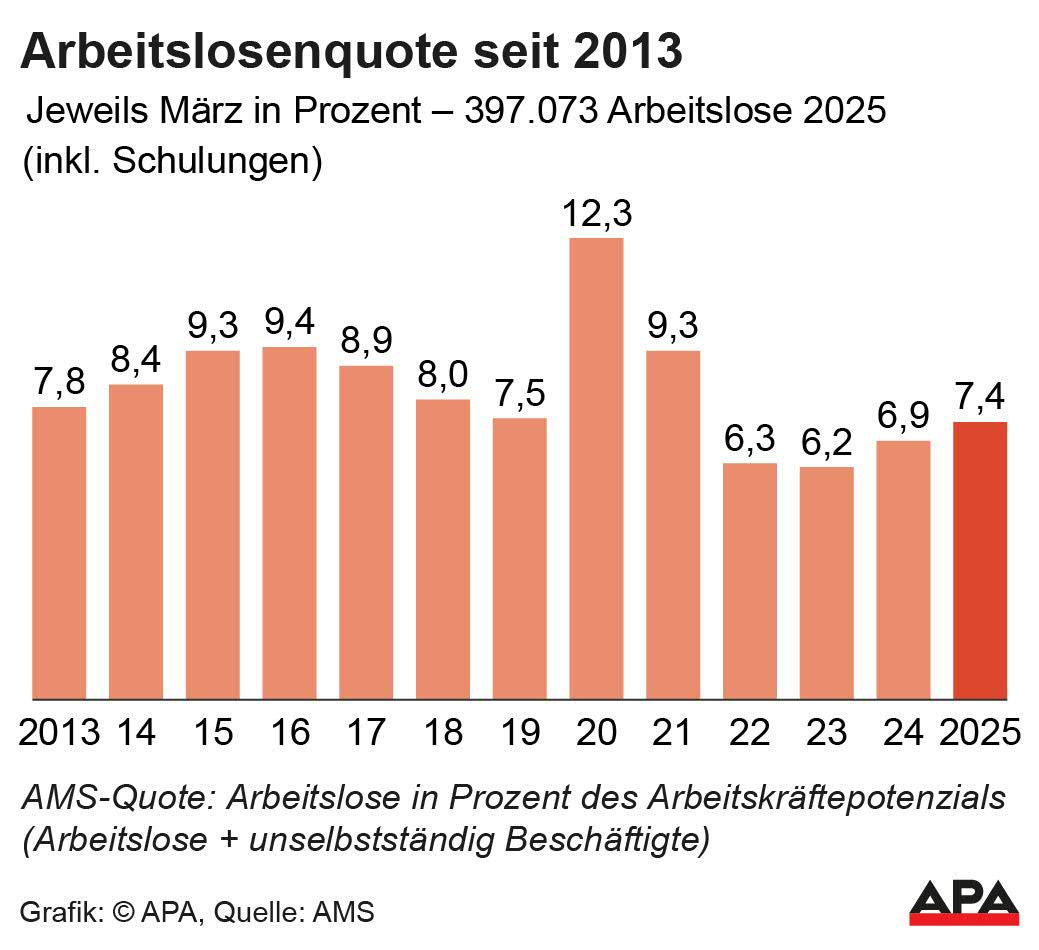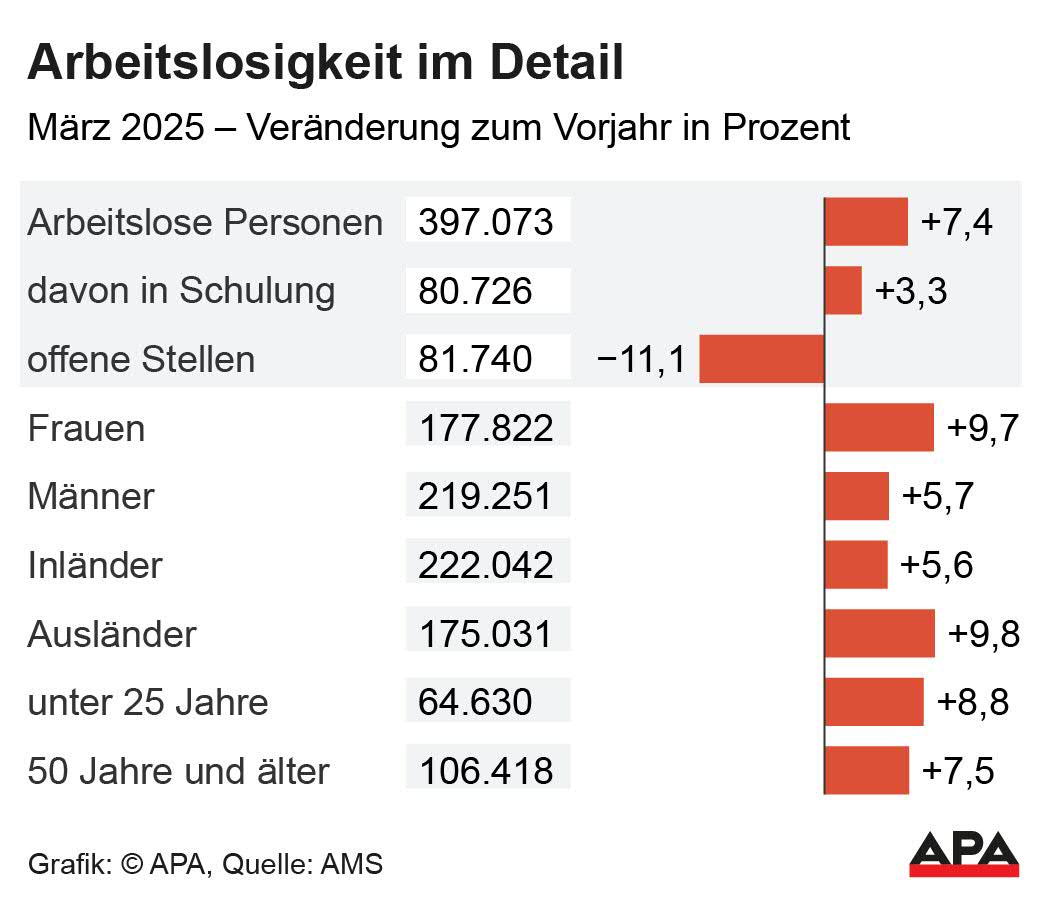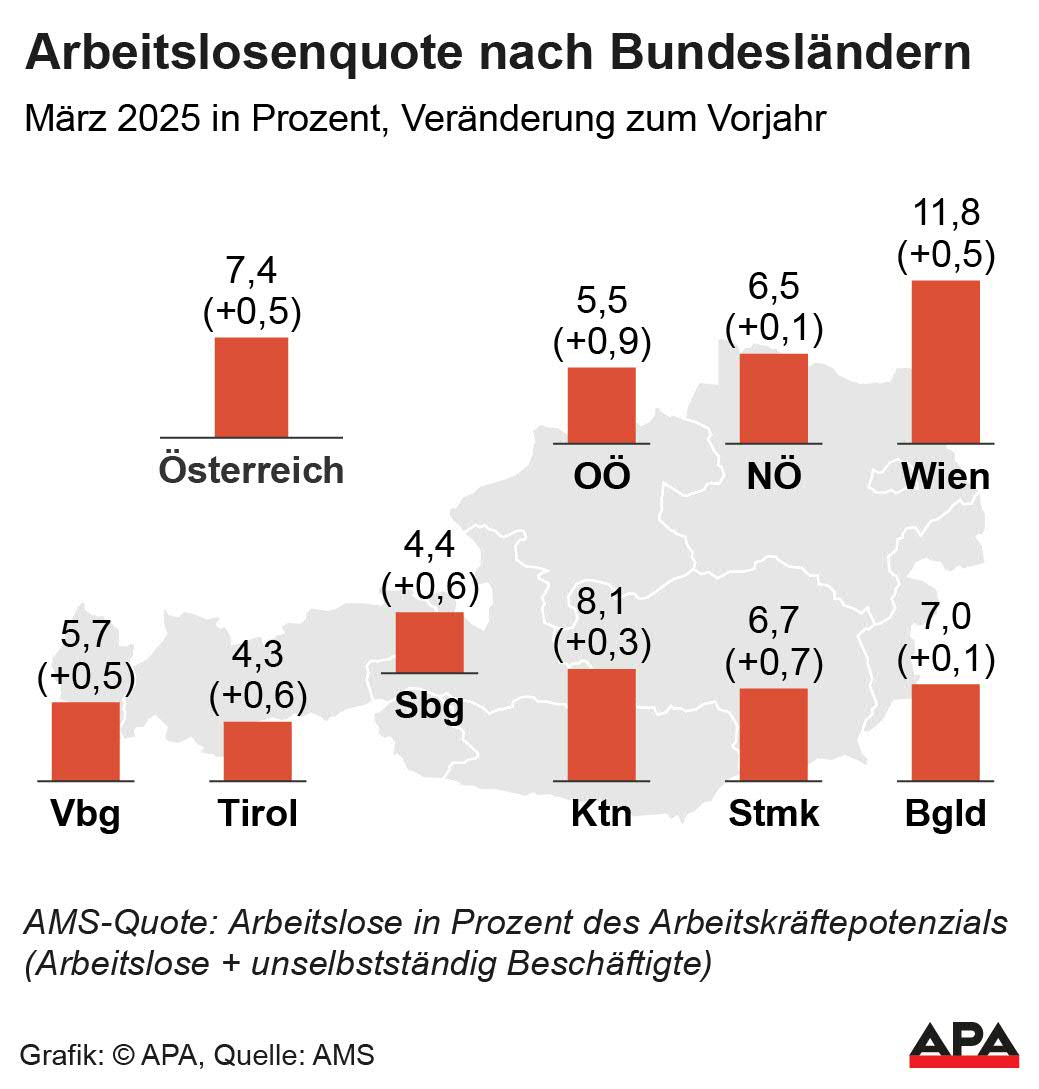Unemployment Increased: 397,000 People Without Jobs in March

According to current figures, around 397,100 people were registered as unemployed or in training with the Public Employment Service (AMS) at the end of March. Of these, 316,300 were unemployed and approximately 80,700 were participants in AMS training programs.
Unemployment: Unemployment rate increased by 0.5 percentage points
Compared to the same month last year, the number of unemployed and training participants increased by 7.4 percent or 27,400 people in March. The unemployment rate at the end of March increased by 0.5 percentage points to 7.4 percent. However, unemployment is rising "not as strongly as the economically tense situation would suggest," said AMS board member Johannes Kopf in a statement. "Particularly affected by the economic downturn" are still industry and trade, Kopf said. The number of unemployed and training participants in trade increased by 4,552 and in manufacturing by 4,391 people in March. Labor and Social Minister Korinna Schumann (SPÖ) referred in a press release to labor market measures planned in the government program. The aim is to "bring job-seeking people back into employment as quickly as possible."

Strongest increase in unemployment in industry
The largest percentage increase in unemployed people and those in AMS training by industry comparison at the end of March compared to the same month last year was in manufacturing/industry (+14.9 percent), in health and social services (+14 percent), and in gastronomy and accommodation (+12.8 percent). The increase was slightly lower in trade (+9.1 percent) and in transport and storage (+6.1 percent). The number of unemployed and training participants decreased in the construction industry (-4 percent) and in temporary employment (-0.6 percent).

The highest increase in the number of unemployed and training participants in a comparison of federal states was recorded in Tyrol (+15.5 percent), followed by Salzburg (+15.3 percent), Upper Austria (+15.1 percent), and Vorarlberg (+10.8 percent). The increase was lower in Styria (+7.5 percent), Vienna (+5.3 percent), Carinthia (+5.0 percent), Burgenland (+4.9 percent), and Lower Austria (+3.3 percent). The highest unemployment rate at the end of March was registered in Vienna at 11.8 percent, followed by Carinthia (8.1 percent), Burgenland (7 percent), Styria (6.7 percent), and Lower Austria (6.5 percent). There was a low unemployment rate in Vorarlberg (5.7 percent), Upper Austria (5.5 percent), Salzburg (4.4 percent), and Tyrol (4.3 percent). The number of unemployed nationals, including training participants, increased by 5.6 percent to around 222,000, and the number of unemployed foreign persons increased significantly by 9.8 percent to around 175,000.

Unemployment Rises Since April 2023
The recession in Austria, ongoing since 2023, is leaving clear marks on the labor market. Unemployment figures have been rising in Austria since April 2023. Economic researchers from Wifo and IHS expect an economic upturn starting in the summer. However, unemployment figures usually decrease with a delay during an economic upswing. The immediately available job vacancies decreased by 11.1 percent to 81,740 at the end of March compared to the same month last year. The ÖVP Economic Association records all job portals in its job monitor and noted a "new low" with 145,118 job vacancies.
More Measures Against Unemployment Demanded
FPÖ social spokesperson Dagmar Belakowitsch demanded "effective measures to combat unemployment" from the new ÖVP/SPÖ/NEOS government in a statement. For ÖGB federal manager Helene Schuberth, investments in the labor market and in the AMS are "essential." Despite the tense budget situation, according to AK President Anderl, the government must set "important impulses" so that the economy and the labor market can get back on track. IV Secretary General Christoph Neumayer described the government's announced reform of the marginal additional income during unemployment benefit receipt as an "important step."
(APA/Red)
This article has been automatically translated, read the original article here.





